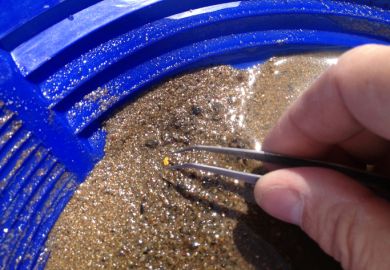Everyone aspires to having a baby Einstein, apparently. Americans can already purchase a variety of methods for "facilitating brain development", and many are introducing their infants to Mozart, Renoir and Shakespeare in the crib. Three leading American developmental psychologists have written a popular book to show us that we all have baby Einsteins. Their message is engaging and clear. Your baby embarks on a scientific research programme at birth. She might appear to be gurgling and looking around aimlessly, but she is making observations, conducting experiments, creating and revising theories. Your two-year-old is having another tantrum? Don't worry. Her research programme is driving her to do things because you do not want her to. She has just begun to understand that her desires differ from yours, and she needs systematically to test the dimensions on which her and your desires may be in conflict.
This "child as scientist" metaphor is pursued throughout this book. The authors illustrate the powerful learning abilities of infants and children beautifully, with well-chosen examples from recent research. They tell us that most of the 1,000 trillion connections in the adult brain are formed during infancy and childhood. The number of actual brain cells (neurons) is virtually identical in infant and adult. What changes is the wiring. By two years of age, the brain is already consuming glucose at adult levels. By three, the child's brain is twice as active as the adult's. It remains so until the child is nine or ten. Moreover, each of us participates in building our own brain. Our parents, schools, everyday environment, all contribute to brain development, but so does the use we make of the information given.
And infants make remarkable use of the information given, as work by the authors has shown. For example, babies do not know beforehand which language they will be exposed to. Thus when they are born, they can discriminate the speech contrasts that carry meaning in all languages. Within a year, exposure to a particular language has altered the brain. Native language sounds are perceived differently from non-native language sounds. A Japanese ten-month-old cannot hear the difference between the first sound in "lake" and in "rake". A Japanese seven-month-old has no difficulty. The same pattern of an innate foundation, powerful learning abilities and unconscious tuition from other people explains rapid learning about the physical world of objects and the psychological world of people. Babies' experiences continually lead them to enrich, modify, revise, reshape, reorganise and replace innate understandings with new ones. And other people, usually unconsciously, act in ways that promote and influence these changes.
This key parental role is potentially scary for children's carers. Patricia Kuhl says that she is often asked questions such as: "If I don't give my child the right experiences now, will it be impossible for his brain to take it in later?" The message is reassuring. The developing brain is very plastic. And we parents have responsibility without power. We are at the mercy of innumerable accidents, including the random genetic mix between temperament and ability in our child and accidents about what the rest of the world is offering to our children. What we can offer is time, energy and company. What we need is the time and space and opportunity to do what we would do anyway. Which is not pinning different Renoir masterpieces around the cot.
Usha Goswami is professor of cognitive developmental psychology, University College London.
How Babies Think
Author - Alison Gopnik, Andrew Meltzoff and Patricia Kuhl
ISBN - 0 297 842 7
Publisher - Weidenfeld and Nicolson
Price - £20.00
Pages - 9



